Last updated: September 2025
Fraudulent proof‑of‑income documents aren’t just an annoyance—they can derail loan approvals, delay rental decisions and trigger criminal exposure. A fake pay stub is any manufactured or altered statement that misrepresents earnings or identity. This guide explains how to spot Fake Pay Stubs, verify employment lawfully and package evidence so reviewers can trust what they see.
Landlords, lenders and employers rely on pay stubs to confirm income and eligibility. Bad actors exploit online generators and editing tools to fabricate details. Because the stakes are high, it’s essential to distinguish legitimate formatting from illegal fabrication. FinancialDocsProvider.com specialises in tidying, reconciling and formatting your existing documents so verifiers can focus on the facts—we never create numbers or alter figures.
Below is a list of related entities and terms that recur throughout this guide. Familiarity with these concepts will help you navigate requirements across jurisdictions.
- Forms & synonyms: pay stub, payslip, paycheque, wage statement, remittance advice, W‑2 (US), 1099‑NEC/1099‑K, Schedule C (US), P60 (UK), P45, SA302 (UK), T4, T4A and Notice of Assessment/NOA (Canada).
- Regulators & agencies: Consumer Financial Protection Bureau (CFPB) and Federal Trade Commission (FTC); Internal Revenue Service (IRS); Financial Conduct Authority (FCA) and HM Revenue & Customs (GOV.UK) in the UK; Financial Consumer Agency of Canada (FCAC) and Canada Revenue Agency (CRA).
- Important concepts: gross pay vs. net pay; deductions and taxes; self‑employment income; proof‑of‑income letters; employment verification letters; loan underwriting; tenant screening; SBA loan applications; gig‑economy earnings.
- Key documents: bank statements, employment contracts, tax returns, utility bills and income certificates.
- Verification services: The Work Number® (used by the U.S. Department of Labor); landlord reference checks; third‑party payroll providers.
What are the legal basics of verifying pay stubs and employment?
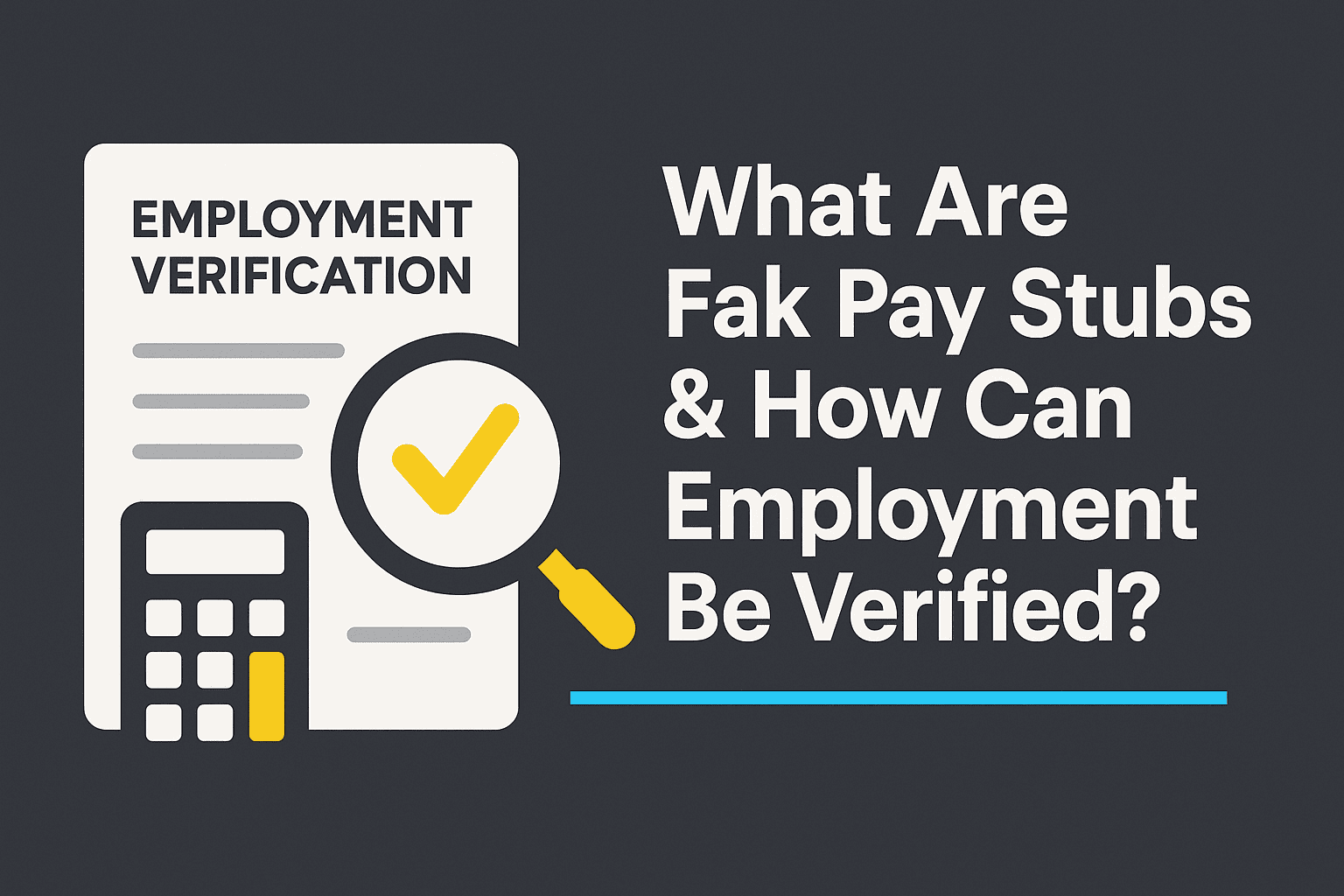
Across the U.S., UK and Canada, the principle is consistent: documents used as proof of income must be accurate and unaltered. Employers must keep proper payroll records, and applicants must present truthful information to lenders and landlords. Misrepresentation is treated as fraud, with penalties ranging from fines to imprisonment.
United States (US) – While federal law doesn’t require employers to issue pay stubs, the Fair Labor Standards Act (FLSA) requires employers to maintain accurate records of hours worked and wages paid. Typical payroll records include the employee’s identifying details, pay period, gross pay, deductions and net pay. Falsified records can draw IRS scrutiny and lead to civil or criminal tax‑fraud charges. Many states impose their own pay‑stub requirements; most require employers to provide detailed wage statements to employees.
United Kingdom (UK) – The Fraud Act 2006 criminalises dishonestly making a false representation, including creating fraudulent documents. Employers must provide payslips under the Employment Rights Act 1996, and falsifying payslips or tax records may result in prosecution, fines and imprisonment. UK authorities routinely pursue cases involving fabricated payslips and related tax documents.
Canada – Tax evasion and fraud are offences under the Income Tax Act and the Criminal Code. The Canada Revenue Agency treats falsifying records and making false statements as tax fraud, which can lead to interest, fines of up to double the evaded taxes and jail time. The Employment Insurance program also penalises false or misleading statements about income; sanctions can include significant monetary penalties and repayment of benefits.
In all jurisdictions, providing false income documentation for loans, rentals or jobs constitutes fraud. Verifiers often request multiple items—pay stubs, W‑2s/T4s, tax returns and bank statements—to cross‑check details. Organising and reconciling these documents up front reduces friction and shows good faith during review.
Which edits to pay stubs are allowed?
Formatting a pay stub for clarity or privacy can be lawful when done correctly. Permissible edits never change amounts, dates or parties; they only improve presentation. The goal is to help reviewers read the document quickly without obscuring material facts.
- Redaction of personal identifiers. You may obscure Social Security numbers, national insurance numbers, home addresses or account numbers to reduce identity‑theft risk. Do not hide context such as employer details or pay‑period dates.
- Improving legibility. Straightening skewed scans, enhancing contrast, or re‑exporting low‑resolution images to a clean PDF is acceptable when the underlying content stays the same. Consistent alignment and readable text help reviewers validate figures.
- Consolidating pages. If a stub spans multiple pages, merging them into one PDF is fine. Preserve every section and total, and avoid reordering lines.
- Organising supporting documents. Combine related documents—W‑2s/T4s, bank statements, employment letters—into a single, clearly labelled packet. FinancialDocsProvider.com compiles and labels these items without changing the data.
- Exporting to standard formats. Converting uncommon image files into PDF improves accessibility and reduces suspicion. Authentic pay stubs are typically issued as PDFs; casual photos or screenshots often slow review.
Mini‑scenario 1: A tenant in London receives a payslip as a large image file, but the landlord requests a PDF. Converting to PDF and cropping the national insurance number is allowed. Changing gross pay or adding unearned overtime is not.
Mini‑scenario 2: A self‑employed consultant in Toronto needs income evidence for an auto loan. They combine invoices, a T4A slip and bank‑deposit records into a single PDF and redact client names. The numbers remain untouched, so the edits are permissible.
Mini‑scenario 3: A U.S. employee submits pay stubs with faded text from an old printer. We straighten the scans, boost contrast and add a cover page describing pay frequency. No amounts, dates or employer fields are changed.
Which pay stub alterations are illegal?
Any edit that changes facts—earnings, dates, employer information or tax IDs—is fraudulent. Fake Pay Stubs often appear in loan, rental or employment applications to create the illusion of income or tenure. Such conduct violates fraud statutes in every jurisdiction and may lead to fines, eviction, loan denials and even jail.
Common illegal alterations include:
- Changing earnings or hours. Inflating gross or net pay, adding bonuses or overtime, rounding numbers to fabricate consistency, or pushing wages above plausible norms is fraud. Reviewers look for mismatched rates and arithmetic that doesn’t reconcile.
- Altering dates and pay periods. Editing pay periods, moving pay dates to match application deadlines, or fabricating entire pay cycles misrepresents employment history. Inconsistent pay frequencies and irregular payday patterns are classic red flags.
- Faking employer or employee information. Substituting an employer’s name, address or tax ID, or inventing a company altogether, is deceptive. Verifiers often confirm identity through corporate registries, HR contacts and payroll providers.
- Manipulating metadata. Attempting to hide editing tools or falsify creation dates in a PDF indicates intent to deceive. Metadata anomalies are frequently reviewed alongside visual inspection.
- Fabricating supporting documents. Creating fake W‑2s, bank statements or tax returns to “back up” a fabricated stub compounds the offence and escalates penalties.
“Explaining away” discrepancies after detection rarely succeeds. Lenders and landlords will request additional records—W‑2s/1099s/T4s, tax returns, bank statements, employment letters—and cross‑check the data. If inconsistencies persist, applications are typically declined and may be referred to authorities.
When do you need professional document formatting?
Clean, consistent documents accelerate underwriting, tenant screening and background checks. Not everyone has payroll software or knows how to compile self‑employment records. Professional formatting organises your existing data without altering facts, making review faster and fairer.
Renters and tenants. Landlords use pay stubs, payslips and employment letters to assess ability to pay. Missing fields or messy visuals can slow approvals or raise avoidable questions. A strong packet merges pay stubs, bank statements and a concise proof‑of‑income letter in one PDF.
Auto loans and consumer credit. Lenders need confidence that borrowers can repay. They may request multiple recent stubs and cross‑check with W‑2s or tax returns. Self‑employed applicants should include invoices, 1099s and bank statements showing matching deposits. A well‑ordered packet clarifies the story and reduces back‑and‑forth.
Small business and SBA loans. Many underwriting checklists require owners and guarantors to show consistent income. Expect personal and business pay stubs (where applicable), tax returns, Notices of Assessment (Canada) or SA302s (UK). Formatting keeps everything aligned with lender criteria.
Self‑employed and gig workers. Freelancers rarely receive traditional pay stubs. Instead, provide 1099s, invoices with project details and deposit‑matching bank statements. We can add a cover page that explains pay frequency, seasonality and income variability.
Employment verification. Employers and agencies often rely on payroll systems and third‑party services such as The Work Number® to confirm status. When sharing income evidence with prospective employers, ensure stubs are legible and include HR contact details for verification.
Professional formatting is not about hiding information; it’s about presenting it logically. Clean packages build trust and help legitimate applicants stand out from fraudsters.
How does FinancialDocsProvider.com work?
Our service is designed for accuracy, speed and compliance. We work only with your authentic documents—pay stubs, payslips, W‑2s, 1099s, tax forms, T4s and bank statements—and return a review‑ready packet. The process below keeps your data intact while improving clarity.
- Intake consultation. Upload your documents through our secure portal and tell us the purpose (rent, loan, immigration, etc.). We don’t request logins to employer or payroll systems—only files you choose to share.
- Reconciliation and checklist. We cross‑check names, dates and amounts across documents. If something is missing, we ask you to provide the correct document rather than editing numbers.
- Formatting & redaction. We crop sensitive identifiers, straighten scans, enhance readability and sequence documents logically. When helpful, we add neutral footnotes clarifying pay frequency or currency conversions. We never fabricate numbers, dates, pay periods or employer names.
- Quality review. A senior editor double‑checks the packet for completeness and compliance. We flag potential issues (e.g., inconsistent pay periods, rounded numbers) so you can address them before submission.
- Delivery. You receive a digital folder with formatted pay stubs and supporting documents. Typical turnaround for standard packages is 24–48 hours. Expedited options may be available for urgent timelines.
Boundaries. We are not a pay‑stub generator and do not create documents. Our role is to organise and present your existing proof of income so lenders, landlords and employers can verify it quickly and accurately.
What belongs in your compliance checklist & packaging tips?
A strong pay‑stub packet contains more than the stub itself. Use the checklist below to align with regulatory expectations and reviewer workflows. It helps prevent gaps, reduces follow‑ups and shortens cycle times.
- Personal details. Confirm that your name, home address and (where required) partial Social Security or national insurance number are accurate and consistent across documents.
- Employer information. Verify that the employer’s name, address and tax ID match official records. Expect landlords and lenders to cross‑check this data.
- Job title and pay frequency. State your role and whether you’re paid weekly, biweekly, semi‑monthly or monthly. Clear frequency helps reviewers annualise income correctly.
- Gross pay and hours worked. Show pre‑tax earnings and hours or units completed. Recalculate totals—rounded numbers and arithmetic errors are red flags.
- Deductions and withholdings. Itemise taxes, benefits and other deductions. Compare each line to year‑to‑date totals and check for consistency.
- Net pay and pay‑period dates. Display take‑home pay and clearly mark the pay‑period start and end dates. Missing or irregular pay‑period dates trigger extra scrutiny.
- Year‑to‑date figures. Include year‑to‑date earnings and taxes. Reviewers commonly reconcile these against W‑2s or tax returns.
- Supporting documents. Attach W‑2s (or T4s/T4As), 1099s, tax returns, bank statements showing deposits, employment letters and, for freelancers, invoices with client names and payment details.
- Document organisation. Arrange items chronologically, use clear file names (e.g., “Pay Stub—Aug 15 2025”) and combine related items into one PDF. Avoid photos or screenshots if a PDF is available.
- Legibility check. Ensure all text is unblurred and readable. If the original is faint, request a fresh copy from your employer or payroll provider.
Packaging tips: Add a one‑page cover sheet summarising pay frequency and listing enclosed documents. Keep digital file sizes reasonable (<10 MB each) and avoid passwords unless specifically requested. For paper packets, use a secure staple or binder and avoid handwritten edits.
What red flags make pay stubs look fake?
Reviewers are trained to spot patterns that signal tampering or fabrication. The more of these indicators that appear together, the higher the risk of Fake Pay Stubs. Use the list below to self‑audit before submission.
- Inconsistent formatting. Authentic stubs follow a stable layout. Mixed fonts, misaligned columns, missing fields or pixelated logos invite deeper review.
- Missing or vague details. Legitimate stubs include the employee name, employer information, job title, pay dates and a clear breakdown of gross pay, deductions and net pay. Vague job titles or absent employer names warrant follow‑up.
- Bad math and round numbers. Perfectly round net pay, impossible rates (e.g., net > gross) or totals that don’t reconcile suggest manipulation.
- Mismatched information across documents. Names, addresses and earnings should align across pay stubs, W‑2s/T4s, bank statements and employment letters. Discrepancies undermine credibility.
- Unrealistic wages or deductions. Salaries far above norms, excessive overtime or unusual one‑off payments without context can be red flags.
- Irregular pay periods or suspicious metadata. Mid‑week “paydays” without explanation, shifting pay frequencies, or metadata showing heavy editing may indicate tampering.
How to avoid these red flags: Obtain stubs directly from your employer or payroll portal. Cross‑check against W‑2s/T4s, bank statements and offer letters. For landlords and lenders, verify employment with HR and request additional documentation if any numbers or dates don’t reconcile.
Where can you find resources & further reading?
When the rules matter, rely on primary, trusted sources. The links below point to official guidance and helpful background reading to support compliant verification.
- U.S. Department of Labor – FLSA Record‑keeping Requirements – outlines the records employers must maintain, including hours worked, pay rates and wages.
- Canada Revenue Agency – Tax Evasion & Fraud – defines tax fraud and summarises penalties for falsifying records.
- Employment Insurance Fraud Guidelines – details responsibilities for applicants, employers and third parties, plus potential fines.
- UK Government – Your right to a payslip – explains employer obligations and employee rights regarding payslips.
- Experian – Defending Against Fake Employment Verification – describes common tactics used by fraudsters and methods to verify employment.
- Internal resources. For deeper insights on our site, explore:
- Fake Pay Stub Legal Consequences & Rejection Risks – penalties for creating or using fake pay stubs.
- Signs of Fake Pay Stubs: Rounded Numbers & Blurry Fonts – how to spot common forgeries.
- How Many Pay Stubs Do You Need? – typical requirements and how to build a complete proof‑of‑income package.
- What Makes a Pay Stub Look Real? – avoid common formatting errors and present authentic documents confidently.
- Services and support. If you need help formatting your documents, visit our pages on proof of income editing, review our pricing, contact our team or read more about our process.
FAQs
Is it illegal to edit a pay stub?
It’s legal to improve formatting or redact sensitive personal information. It’s illegal to change factual details such as earnings, hours worked, employer name or pay‑period dates. Altering those details constitutes fraud and can result in fines, eviction or criminal charges.
How can landlords and lenders verify a pay stub?
Confirm that a stub includes the employee’s full name, employer information, job title, pay‑period dates, gross pay, deductions and net pay. Cross‑check against W‑2s/1099s/T4s, tax returns and bank statements. Landlords may also contact the employer’s HR team to verify employment.
What documents can self‑employed people use for income verification?
Self‑employed individuals typically provide 1099 forms, invoices with project details and payment amounts, and bank statements showing deposits that match those invoices. Tax returns and Notices of Assessment can reinforce credibility. Combining these items into one organised packet speeds review.
How many pay stubs do lenders usually require?
Requirements vary, but two to six recent stubs are common. For weekly or biweekly pay, three to six stubs often cover two months; for monthly pay, two or three may suffice. See our guide on how many pay stubs you need for detailed scenarios.
Can I use a bank statement instead of a pay stub?
Bank statements show deposits but omit gross pay, deductions and pay periods. They are helpful supporting evidence but rarely replace a pay stub. For W‑2 employees, provide statements alongside stubs; for self‑employed applicants, pair statements with invoices and tax filings.
Need accurate, reliable financial documents fast? Contact FinancialDocsProvider.com now.
Author: Jane Doe is a compliance specialist at FinancialDocsProvider.com with a decade of experience organising pay stubs, tax forms and proof‑of‑income packages for tenants, entrepreneurs and freelancers. Learn more about our process.


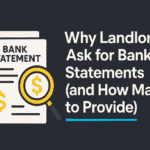
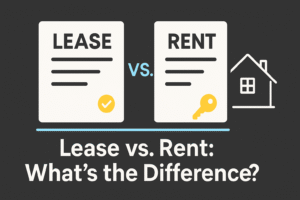
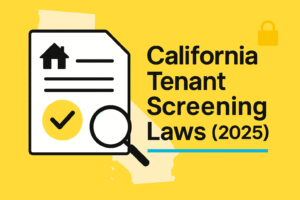
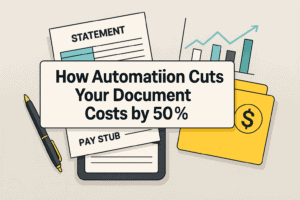
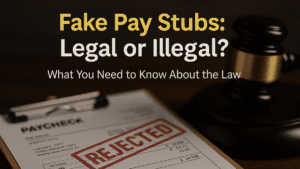
Add comment